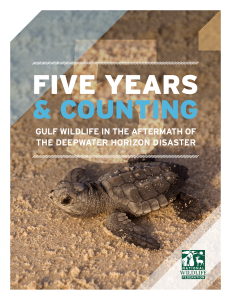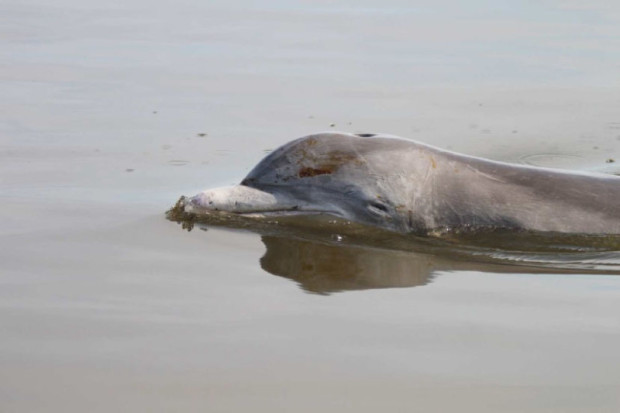We have much more to do and your continued support is needed now more than ever.
BP Vs. Science
Nearly five years after the Deepwater Horizon rig exploded, scientists are finally starting to get their arms around the impacts of the oil and dispersants on the Gulf of Mexico. BP is not happy with much of the research that is coming to light, and has even created an entire website dedicated to attacking that science, the scientists who created it, and anyone who defends it.
 Therefore it is no surprise that BP is critical of NWF’s new report Five Years and Counting: Gulf Wildlife in the Aftermath of the Deepwater Horizon Disaster—the company did not like many of the nearly 200 studies that fed into it.
Therefore it is no surprise that BP is critical of NWF’s new report Five Years and Counting: Gulf Wildlife in the Aftermath of the Deepwater Horizon Disaster—the company did not like many of the nearly 200 studies that fed into it.
For example, a recent Florida State University study located BP oil on the floor of the Gulf, in deep waters. BP attacked the study, with the claim that that oil—which surrounds the wellhead on the floor of the Gulf—was somehow not the company’s oil. But the FSU study supports another independent study, which found that about 10 percent of the spill’s oil made it to the Gulf floor in an area covering more than 1,200 square miles.
Similarly, BP has lashed out at a recent, comprehensive study looking the oil’s impacts on bluefin tuna larvae. The researchers found that exposure to oil can cause irregular heartbeats, which can alter the development of the tuna—even curving their spines. Furthermore, this particular study is not anomaly, but rather a culmination of more than two decades of NOAA research on crude oil toxicity to fish. But BP wants you to believe that the study was faulty in its design and execution.

But BP continues to deny any culpability, pointing out that some dolphins died before the spill (technically true, but a recent study shows that many of these deaths were from exposure to fresh water and unusually cold weather) and taking advantage of NOAA’s scientific preference towards caution.
But last week, NOAA finally put a cork in BP’s denials, issuing a concise summary of the research done over the past five years. The agency’s conclusion? “Current evidence suggests that the Deepwater Horizon oil spill is a contributor to the largest and longest lasting dolphin die-off on record in the Gulf of Mexico.”
Ryan Fikes, NWF’s Gulf restoration scientist and the lead author of the new report, is fed up with BP’s continual attacks on the science. “Five years in, BP’s tactics of denial and delay have gotten old. We simply can’t afford to keep wasting time. BP needs to quit stalling so we can get started restoring the Gulf’s fragile ecosystem.”
![]() Tell BP to quit stalling, and accept responsibility for its actions by paying its Clean Water Act fines!
Tell BP to quit stalling, and accept responsibility for its actions by paying its Clean Water Act fines!





















